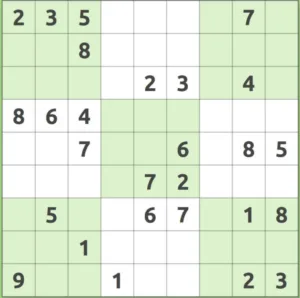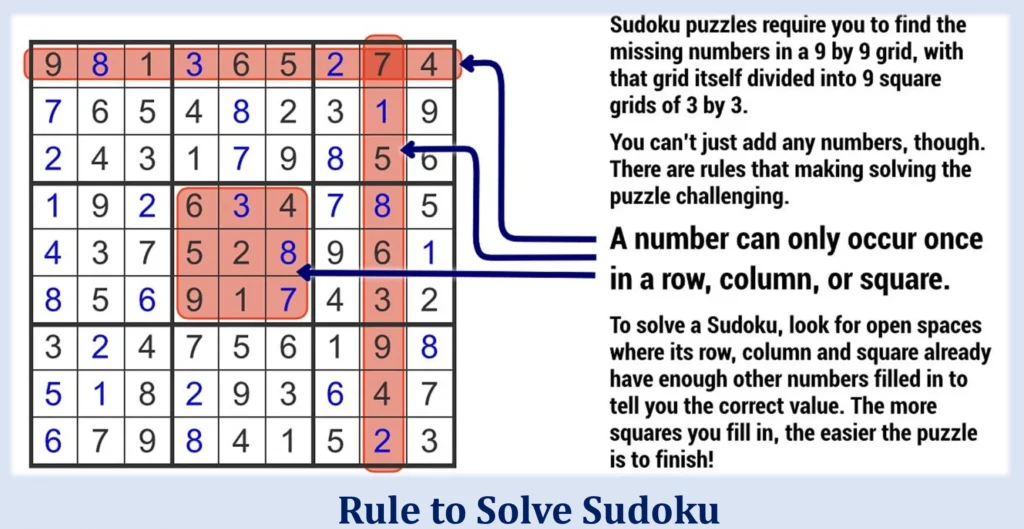
International Sudoku Day is a date cherished by puzzle enthusiasts worldwide, falling on the 9th of September (9/9) corresponds to a mathematical brain puzzle represented by a 9×9 grid pattern. The objective of Sudoku is to complete this grid in such a way that each column, row, and 3×3 sub-grid contains the digits from 1 to 9. As we are celebrating this day, I’ll bring before you the fascinating past of Sudoku. In addition, I’ll lay out for you the fascinating puzzle’s global voyage, and we’ll discover how it continues to pique the curiosity of all demographic groups.
History of International Sudoku Day
The French Predecessors (1892)
Our journey begins in 1892 when the French newspaper “La Siècle” introduced a puzzle game bearing a resemblance to Sudoku. This precursor puzzle required the inclusion of designated numbers in each row and column. However, unlike Sudoku, it involved numerals higher than 9 and primarily engaged solvers’ mathematical skills rather than their logic. Several French newspapers followed suit with similar games during this period. While these puzzles were akin to Sudoku, none were precisely identical, and their popularity waned as World War I approached.
The Birth of Sudoku (1979)
In 1979, an Indiana (US state) architect named Howard Garns devised a problem that would soon become known as Sudoku. At that time, it was named “Number Place” and was published in “Dell Magazine.” Regrettably, Howard Garns passed away without witnessing the international sensation his brainchild would become. However, the game was already setting Japan’s puzzle industry ablaze, and it was christened Sudoku for the first time, accumulating a fan base numbering in the millions.
Wayne Gould’s Game-Changing Contribution (1997)
In 1997, a Hong Kong judge named Wayne Gould made a pivotal contribution to Sudoku’s global popularity. He designed a computer application which was capable of generating original sudoku puzzles. In the UK, Gould presented the game to newspapers as a daily puzzle feature, and soon Sudoku was well-known all over the world.
The Contemporary Sudoku Landscape
Apart from being published in the newspapers and magazines regularly, Sudoku is easily and widely available on smartphones. This game has succeeded in earning the love from the entire world. Even Peter Levy’s Song ” I got this number pattern running through my head …….”, which was nominated for an award was also inspired by this game. This shows the curiosity of this game among in all culture. People who love puzzles have a next level craze for this game.
Evolution and Global Impact
Television Takes Notice (2005-2006)
In 2005, British TV station “Channel 4” began including a daily Sudoku puzzle in its Teletext, further cementing the puzzle’s presence in popular culture. The following year, in 2006, Sudoku reached new heights of popularity when a Sudoku website published Peter Levy’s song on the topic. The demand from enthusiasts eager to enjoy the song was so immense that the website’s servers couldn’t handle the load.
Official Recognition and Online Competitions (2013)
In 2013, The World Puzzle Federation officially designated September 9 as International Sudoku Day, solidifying its place in the calendar of global celebrations. Since then, Sudoku fans from all over the world have been excitedly waiting for this day each year. They celebrate by organizing different events and contests. Online Sudoku competition was also started by the World Puzzle Federation. It had multiple rounds, which proves that there are huge number of enrollments for the competition.
Benefits of Sudoku
Sudoku is great for many reasons:
- Smart Thinking: Sudoku makes you think logically and figure things out, giving your brain a good workout.
- Easy to Start: The rules of Sudoku are simple, so people of all ages and backgrounds can enjoy it.
- Brain Exercise: Doing Sudoku regularly helps your brain get better at remembering things, staying focused, and solving problems.
- Relaxation Time: Solving Sudoku puzzles can be a calm and peaceful activity that helps you relax and take a break from everyday worries.
- Friends and Fun: Sudoku has brought together a lively group of fans who like to share their experiences and have friendly competitions.
Rules of Sudoku
The rules of Sudoku are quite simple:

- Grid: Sudoku is played on a 9×9 grid, which is divided into nine 3×3 sub grids called “regions” or “boxes.”
- Digits: Use the digits 1 through 9. These digits must be filled into the grid following specific rules.
- No Repeats: In each row, column, and region (3×3 box), the digits 1 through 9 must appear exactly once. In other words, no digit can be repeated within a row, column, or region.
- Given Numbers: At the start of the puzzle, some cells in the grid are pre-filled with numbers (usually around 20-30 digits). These pre-filled numbers are the clues and can be used to solve the puzzle.
- Logical Deduction: The goal is to fill in the empty cells with the remaining digits (1-9) in a way that adheres to the no-repeats rule. This can be achieved by looking at the patterns, applying the logic on the derived pattern and eliminating possibilities.
- Solving: Continue filling in numbers, one at a time, until you’ve placed all the digits correctly and met the no-repeats rule for each row, column, and 3×3 region.
- Completion: A completed Sudoku puzzle will have all 81 cells filled with digits, and every row, column, and 3×3 region will contain each digit from 1 to 9 exactly once.
Master Sudoku on International Sudoku day
Now that I have told you about the appeal and benefits of Sudoku. I am writing for you all some practices which will help you master this puzzle:
- Start with Easy Puzzles: If you’re new to Sudoku, begin with easy puzzles to grasp the basic rules and strategies. As you become more comfortable, gradually move on to harder levels.
- Practice Regularly: Consistency is key. So, try to make Sudoku solving a part of your daily routine. This will help you to improve your analyzing skills and gradually it will help in improving your puzzle solving speed.
- Use Pencil Marks: Don’t be afraid to make small notes in the puzzle cells. The marks made by pencil will help you in keeping the track of the potential numbers that can occupy the place. Further it will also help you to eliminate the wrong possibilities.
- Scan the Grid: Always scan the entire grid for potential number placements. Look for rows, columns, and boxes with fewer filled cells, as these are often the best places to start.
- Stay Patient: Sudoku can be challenging, but it’s important to remain patient. Don’t be discouraged by slow progress; practice and persistence will lead to improvement.
Join to celebrate the International Sudoku day!
People who love Sudoku from all over the world are ready to celebrate International Sudoku Day. This day marks the importance of numbers and logics. No matter whether you have been solving Sudoku from a long time or you are just a beginner, this day becomes special for the Sudoku lovers. Experts in this game should not forget to share their experience, tips and tricks with their friends. Meanwhile, the beginners can keep trying hard to master this puzzle.
Happy International Sudoku Day!
